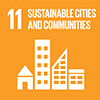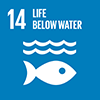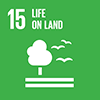Description/achievement of initiative
The objective was to reduce loss of life, injuries and economic losses cause by tsunami in Samoa, Tonga, Cook Islands, Niue and Tokelau through an end-to-end tsunami risk management programme.
Implementation methodologies
Programme-based approach/bilateral institutional linkages: sharing expertise through developing strong institutional linkages and peer-to-peer focal points, backed up through investment in equipment and hardware.
Arrangements for Capacity-Building and Technology Transfer
The variability in tsunami hazard risk across the five countries required a different emphasis on the components of tsunami risk management for each country, utilising technology appropriate to their unique characteristics. For example, in Tokelau, this involved New Zealand's National Institute of Water and Atmospheric Research undertaking a tsunami hazard modelling project. The challenges of distance, a tropical and maritime environment, small-scale economies with low resource bases had to be addressed, and there was a need to consider the roles of traditional and faith-based communities. This led to decisions such as installing hand-operated (rather than electric powered) sirens in countries like Tonga where power supply can be irregular; utilising radio interview and advertising for public awareness activities in Tonga and the Cook Islands where there is a high use of radio for public information, and with the high church-going population, utilising church services for tsunami awareness and safety messages. The partnerships between New Zealand Ministry of Civil Defence & Emergency Management (MCDEM) focal points and Pacific National Disaster Management Offices (NDMOs) were at the core of this project. MCDEM staff were selected as focal points to work with NDMOs on a peer-to-peer basis. The mutually beneficial nature of this arrangement was recognised. It led to the development of strong relationships, and ensured common language and understanding of disaster risk management approaches between partners.Collaboration with regional stakeholders regional organisations, NGOs, scientific and research bodies, donor agencies, and private sector groups was also important. The project built on existing relationships and studies, with an emphasis on complementing and building on work to date, and leveraged off a Pacific Tsunami Warning System training event to focus on the development of tsunami standard operating procedures, and the PacWave in-country and table-top exercises held in 2011 and 2013.Finally, the focus on was on practical initiatives that would make a real difference for NDMOs in an emergency. Following emergency operations centre audits, appropriate equipment and hardware was identified for each country. This included tsunami evacuation signs in the Cook Islands, Niue and Samoa; hand-operated tsunami sirens in Tonga and the Cook islands, centrally activated siren network in Samoa along with a comprehensive emergency radio network. A number of the NDMOs were also supported to upgrade their emergency operating centres with essential equipment.
Coordination mechanisms/governance structure
Individual bilateral governance arrangements and priorities are negotiated with participating countries, ensuring the initiative is owned by the Pacific partner. Overarching governance for the regional support was managed by New Zealand MCDEM and the New Zealand Ministry of Foreign Affairs and Trade as the donor.
Partner(s)
Pacific National Disaster Management Offices in Samoa, Tonga, the Cook Islands, Niue, and Tokelau.
New Zealand Ministry of Civil Defence & Emergency Management (MCDEM) and Ministry of Foreign Affairs and Trade (MFAT)




 2011-2014
2011-2014
 2011-2014
2011-2014
 2011-2014
2011-2014
 2014
2014
 Time-frame: 0000-00-00 - July 2014
Time-frame: 0000-00-00 - July 2014